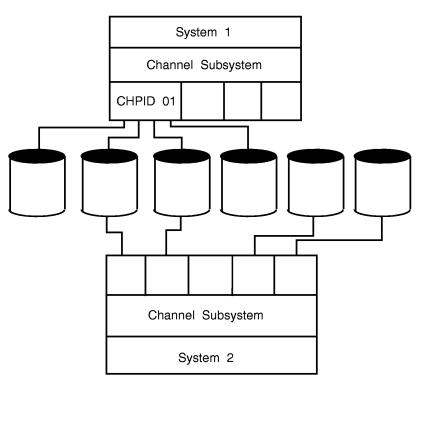A terminating error condition is unexpected only; it is never the result of a previous recovery action. A terminating error condition indicates that the channel path is not permanently lost, but cannot be used until the error condition is reset. In this case, the system attempts to reset the channel path. The CRW that results from this reset is an expected CRW, and it will indicate whether the reset corrected the problem in the channel path.
- For a dynamic pathing device with multiple paths, no action is taken until the expected CRW is received.
- For a non-dynamic pathing device that supports unconditional reserve, such as a 3350 Direct Access Storage, the system issues an unconditional reserve command to the device to move the reserve to an alternate path.
- For a non-dynamic pathing device that does not support unconditional reserve, such as a 3330 Disk Storage, or for a reserved/assigned device with only one path, the system issues message IOS063E (or IOS062E) to request that the operator stop I/O to the shared devices (see Figure 1 and the accompanying description). The system then tries to recover the channel path.

Figure 1 shows two DASD devices that are shared between two systems. When system 1 encounters a channel path error on channel path 01, indicated by message IOS063E (or IOS62E), the operator should stop I/O to the shared devices from system 2 to maintain data integrity during recovery of the channel path.